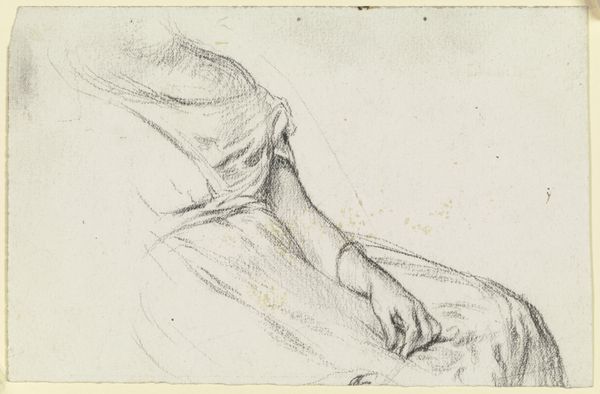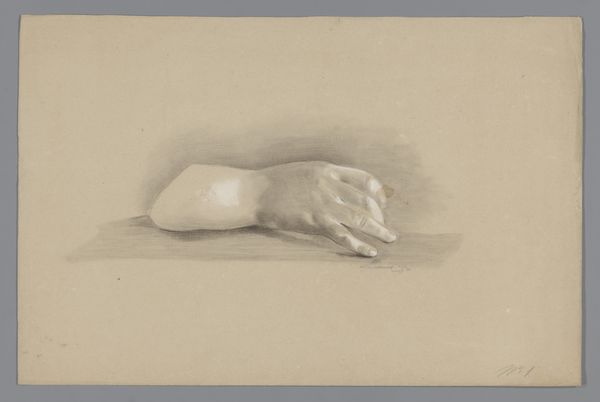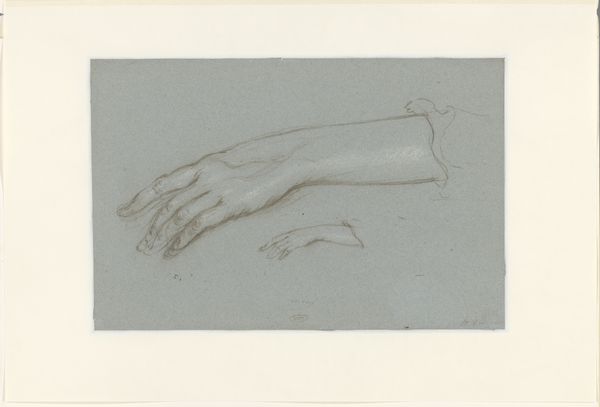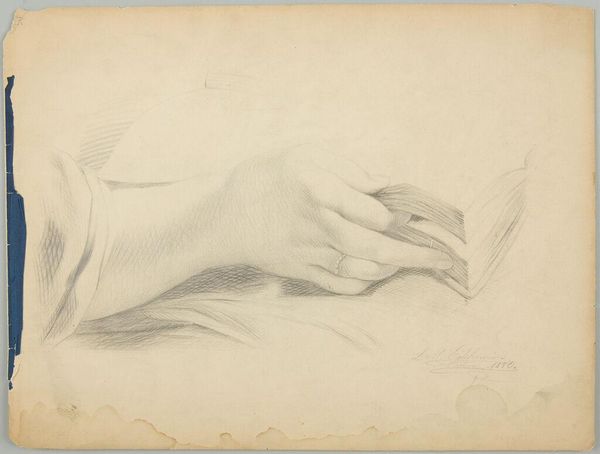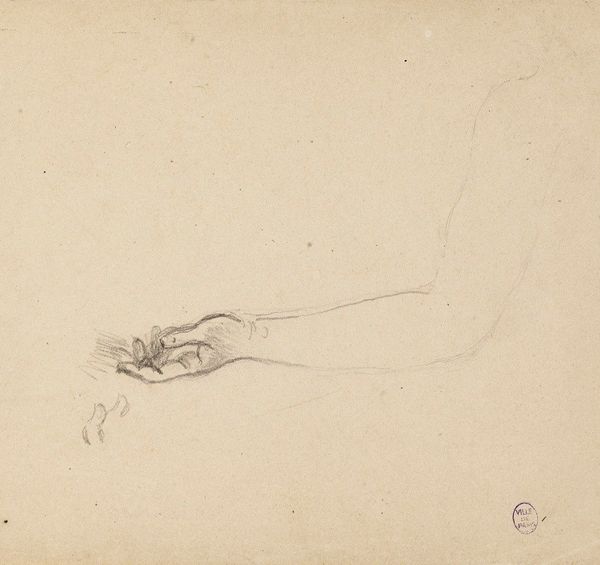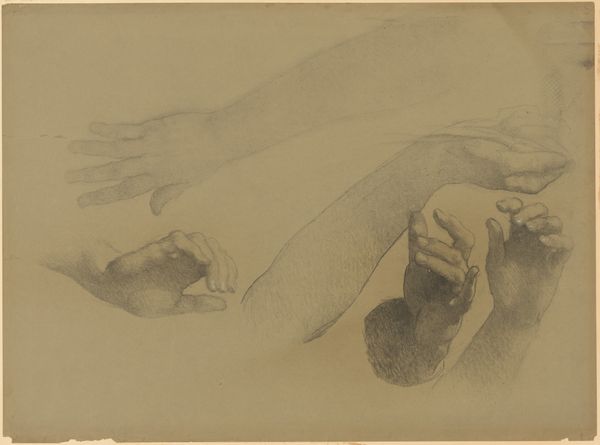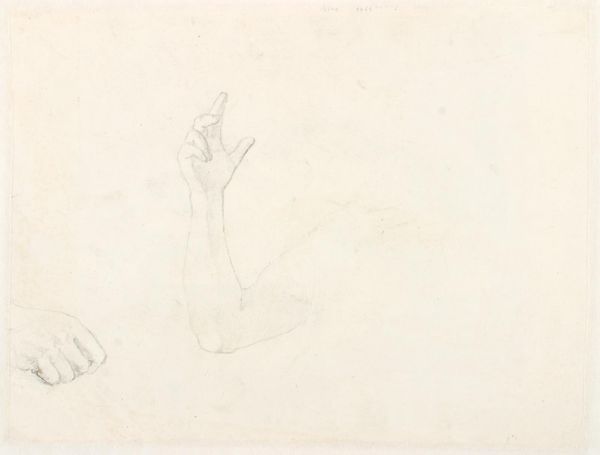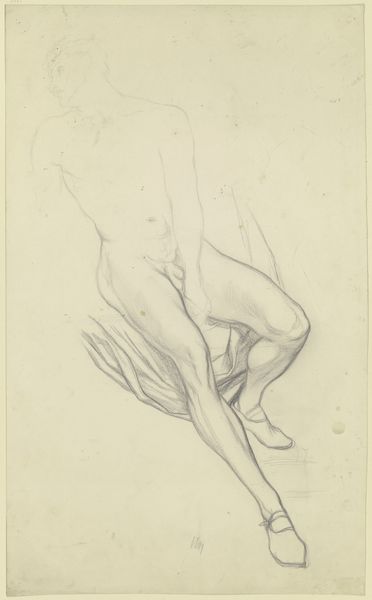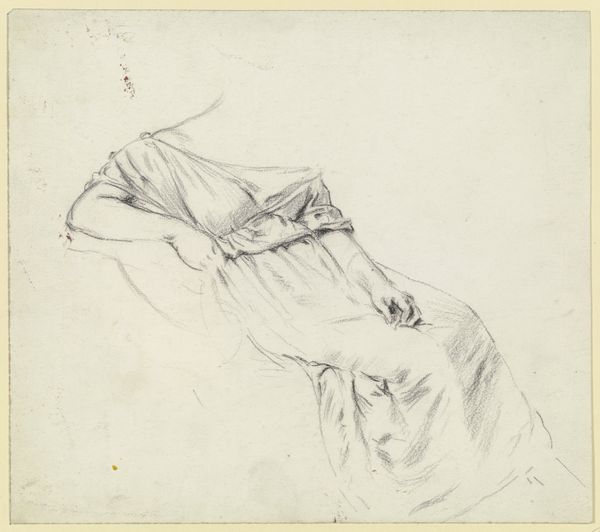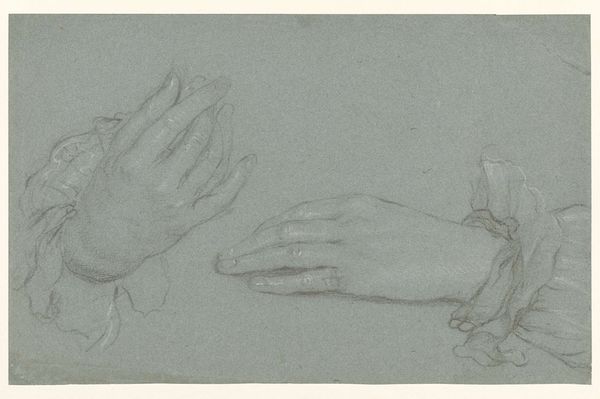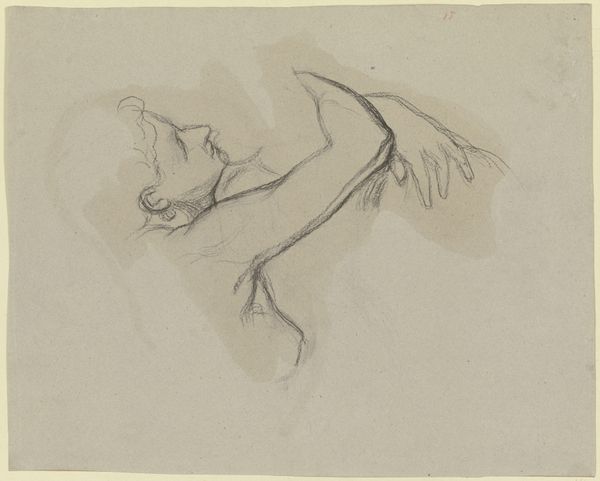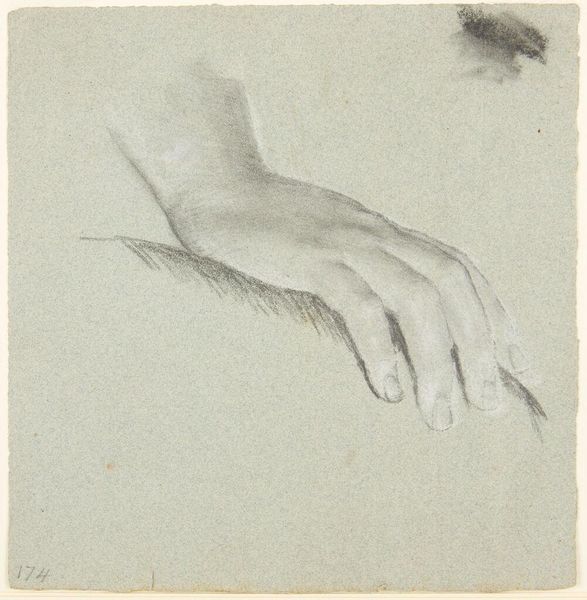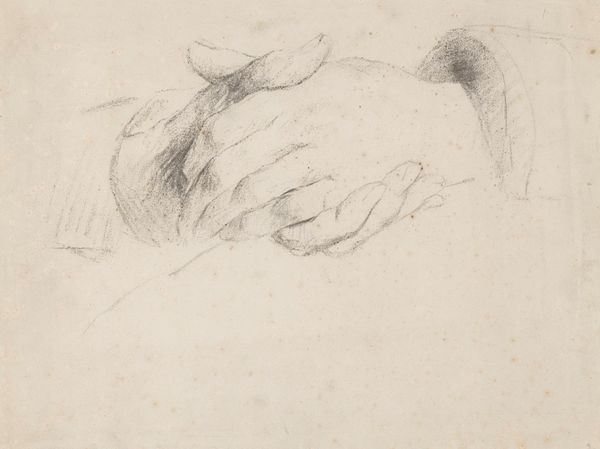
drawing, pencil
#
portrait
#
drawing
#
form
#
pencil
#
line
#
academic-art
#
realism
Dimensions: height 311 mm, width 470 mm
Copyright: Rijks Museum: Open Domain
Editor: This drawing, "Gipsmodel van een hand" created sometime between 1800 and 1900 by Alexander Cranendoncq, is a study of a plaster hand in pencil. It strikes me as very academic, a bit cold and detached. What do you see in this work? Curator: Beyond the initial impression, it’s interesting to consider why and for whom this hand was drawn. Academic art like this, focusing on form, served a particular purpose. The hand, devoid of individuality, becomes a blank canvas to practice depicting light, shadow, and anatomy. But let's also think about whose hands *weren’t* being studied in art at this time, and the power structures at play in defining artistic ideals. How does that reading resonate with you? Editor: That’s a great point, I hadn't really considered that. Thinking about the people and whose likeness weren't deemed worthy to be depicted. So it’s like, this isn’t just an innocent study; it's reinforcing certain aesthetic values, consciously or not. Curator: Precisely! And if we look at it through a gendered lens, the hand, smooth and idealized, often stands in for conventional ideals of beauty. Even the seeming objectivity of academic drawing can reinforce particular, exclusionary narratives. Who benefitted, then, from perpetuating them? Editor: So it becomes less about the technical skill and more about the social implications. It does give me a different perspective on "Realism," which now doesn't seem real at all! Curator: Exactly. By engaging with these historical contexts, we can use art to critique those power structures. What do you make of that now, having changed your perspective? Editor: It gives me the understanding I needed to look at art from a much wider, more social justice-oriented lens. Now, when I come across "realistic" portrayals, I'll know there is far more to what's shown! Curator: Wonderful, that's the starting point for us. To look critically, not only at the work itself, but what lies outside and behind it.
Comments
No comments
Be the first to comment and join the conversation on the ultimate creative platform.

